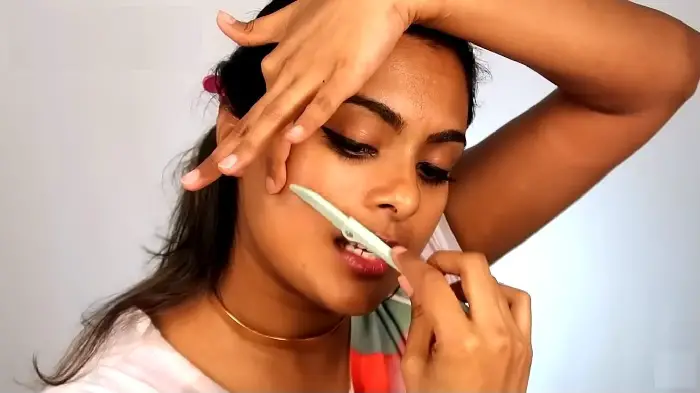In today’s beauty-conscious world, women are constantly seeking ways to maintain smooth and hair-free skin. One common concern that many women share is whether it’s safe to shave their upper lip with a razor. In this article, we’ll address this question and provide you with valuable insights and tips for achieving a flawless upper lip without any worries.
Can I Shave My Upper Lip with a Razor, Girl?
Yes, you can shave your upper lip with a razor if you’re a girl. It’s a common and effective method to remove unwanted facial hair. However, it’s important to follow some precautions to avoid irritation or ingrown hairs. Use a clean, sharp razor and a moisturizing shaving cream or gel to protect your skin. Shave in the direction of hair growth, and avoid pressing too hard to prevent cuts or nicks.
The Fear of Razor
Many women are apprehensive about using a razor on their upper lip due to concerns about thicker hair growth, stubble, or potential skin irritation. Let’s debunk some myths and explore the facts.
Understanding Hair Growth
Before diving into the razor debate, it’s crucial to understand how hair grows. Hair on the upper lip, like any other facial hair, is typically vellus hair, which is fine and light-colored. Contrary to popular belief, shaving does not make hair grow back thicker or darker. It simply creates a blunt edge, making it appear coarser initially.
The Benefits of Razor Shaving
Shaving your upper lip with a razor offers several benefits:
Quick and Painless
Razor shaving is a quick and painless method to remove unwanted hair. It’s perfect for those who are always on the go.
Exfoliation
Shaving also acts as a gentle exfoliation method, helping to remove dead skin cells and leave your skin smoother.
Cost-Effective
Compared to waxing or other hair removal methods, razors are budget-friendly and readily available.
How to Shave Your Upper Lip Safely
To ensure a safe and effective shaving experience, follow these steps:
Gather Your Tools
You’ll need a clean, sharp razor and shaving cream or gel.
Prepare Your Skin
Wash your face with warm water to soften the hair and open the pores. Apply shaving cream or gel to the upper lip area.
Shave in the Right Direction
Always shave in the direction of hair growth to prevent irritation. Use short, gentle strokes.
Aftercare
Once you’ve finished shaving, rinse your face with cold water to close the pores. Apply a moisturizer to keep your skin hydrated.
Addressing Concerns
Will It Make My Hair Thicker?
No, shaving does not affect hair thickness. Hair appears thicker initially because it has a blunt edge after shaving, but this effect is temporary.
What About Ingrown Hairs?
To prevent ingrown hairs, exfoliate regularly and avoid pressing too hard while shaving.
How Often Should I Shave?
The frequency of shaving depends on individual hair growth. Some may need to shave every few days, while others can go longer between sessions.
Conclusion
In conclusion, it’s perfectly safe for girls to shave their upper lip with a razor. Shaving is a convenient and effective method for achieving smooth and hair-free skin. Remember, it won’t make your hair grow thicker or darker, and with proper technique and aftercare, you can enjoy a flawless upper lip.
FAQs (Frequently Asked Questions)
1. Can I use a men’s razor for my upper lip?
Yes, you can use a men’s razor for your upper lip. Just ensure it’s clean and sharp.
2. Will shaving my upper lip cause redness?
Some mild redness can occur after shaving, but it should subside within a few hours. You can apply a soothing lotion to alleviate it.
3. Can I shave my upper lip if I have acne?
It’s best to avoid shaving over active acne as it can irritate the skin. Wait until your skin clears up before shaving.
4. What’s the difference between using a razor and waxing?
Waxing removes hair from the root, providing longer-lasting results, but it can be more painful than shaving.
5. How do I dispose of used razors safely?
Wrap used razors in tissue or paper and dispose of them in a sealed container to prevent accidents.
